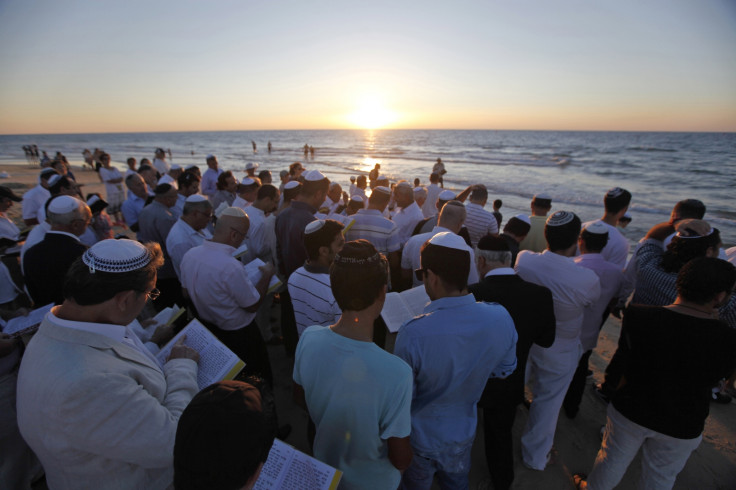Rosh Hashanah 2017: How to celebrate the Jewish New Year 5778
The Jewish New Year in 2017 begins at sunset on 20 September.

Synagogues around the world will celebrate the start of Rosh Hashanah 2017 in September. The Jewish New Year is one of the most important festivals in the Jewish calendar and is the first of the High Holy Days, which occur in the early autumn in the northern hemisphere.
Rosh Hashanah will begin at sunset on Tuesday 20 September 2017 and last until 15 September. According to the Hebrew or Jewish calendar, a lunisolar calendar used for predominantly for Jewish religious observances, 13 September will bring in the year 5778. From festive meals to synagogue services, Rosh Hashanah is celebrated in a number of different ways.
Shofar
A shofar is an ancient musical instrument made from a ram's horn. It is played in Jewish synagogue services on Rosh Hashanah and Yom Kippur, the Day of Atonement, which is the holiest day of the year for the Jewish people.
The shofar is mentioned frequently in the Hebrew Bible, the Talmud, and in rabbinic literature and it is sounded just before, during and after the Musaf prayer on Rosh Hashanah. Like the modern bugle, all pitch control is done by varying the player's embouchure.
Wearing white
When attending the synagogue, white or light colours are traditionally worn to symbolise new beginnings, purity and renewal. Some men may wear a white robe called a "kittel" over their regular clothes.

Observing Tashlich
Tashlich comes from the Hebrew word meaning "to cast" and refers to the intent of casting away sins. It is an ancient Jewish custom common to both Ashkenazi and Sephardic communities. Usually performed on the first day of Rosh Hashanah, the ritual involves throwing pieces of bread or other foods into a body of flowing water so they are symbolically carried away.
Taking part in the tradition symbolises the start of a new year with a clean slate. The name Tashlich and the practice itself derive from a Biblical passage in the book of Micah, which is sometimes recited at the ceremony: "You will cast all their sins into the depths of the sea."
Apples dipped in honey
One of the most popular and well-known customs on Rosh Hashanah is dipping sliced apple into honey, an age-old tradition to express hope for a sweet new year. Ancient Jews believed apples had healing properties. In The Second Jewish Book Of Why, Rabbi Alfred Kolatch wrote that the fruit was frequently sent as gifts to those with ill health during Talmudic times.
Candle lighting
Candles are lit to bring in the Jewish holidays with warmth and light. As Jewish days begin with the setting sun, a lit candle is believed to create a sacred space. The number of candles depends on preference and tradition, and some light one candle for each member of the family.
Lighting two candles, though, is standard practice based on several reasons: the male and female aspects of God's presence or the two words, zachor (remember) and shamor (keep), that the Torah uses to urge observance of Shabbat (the Jewish day of rest).
© Copyright IBTimes 2024. All rights reserved.





